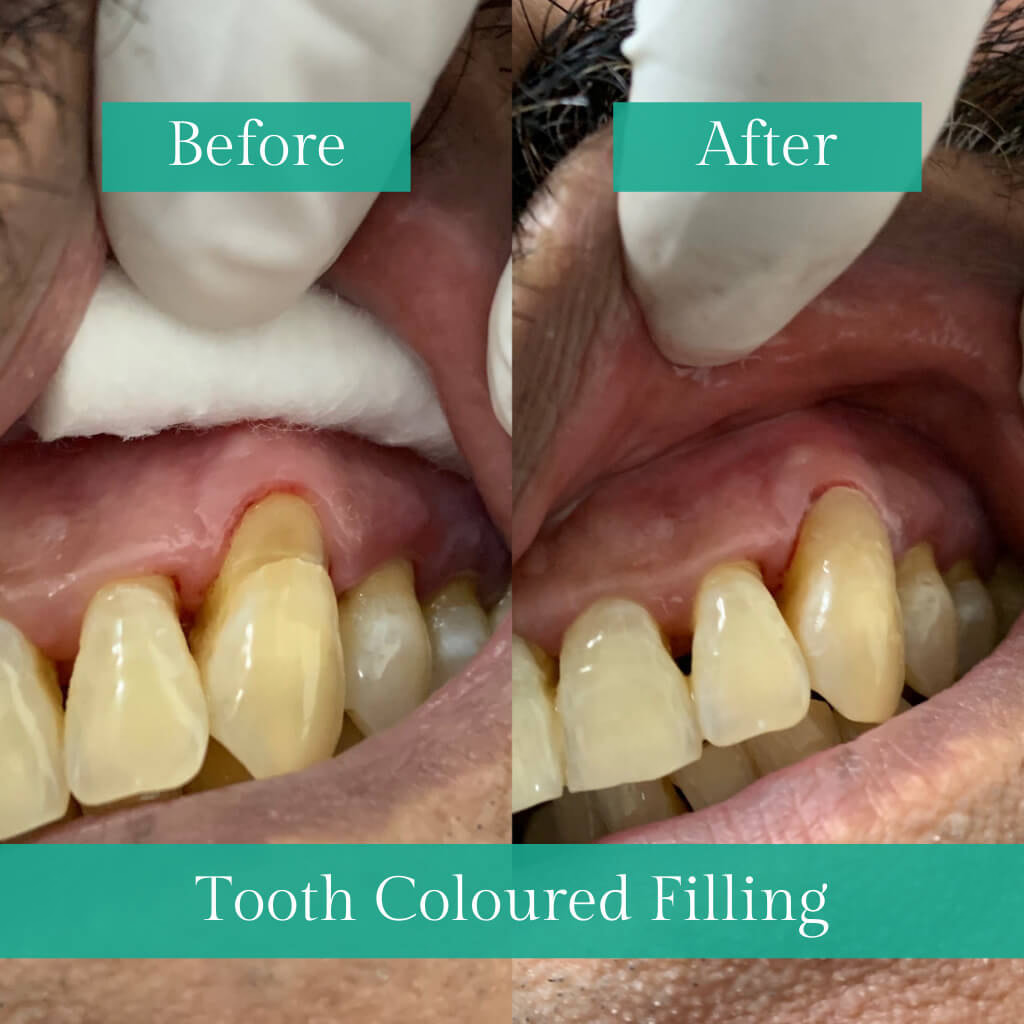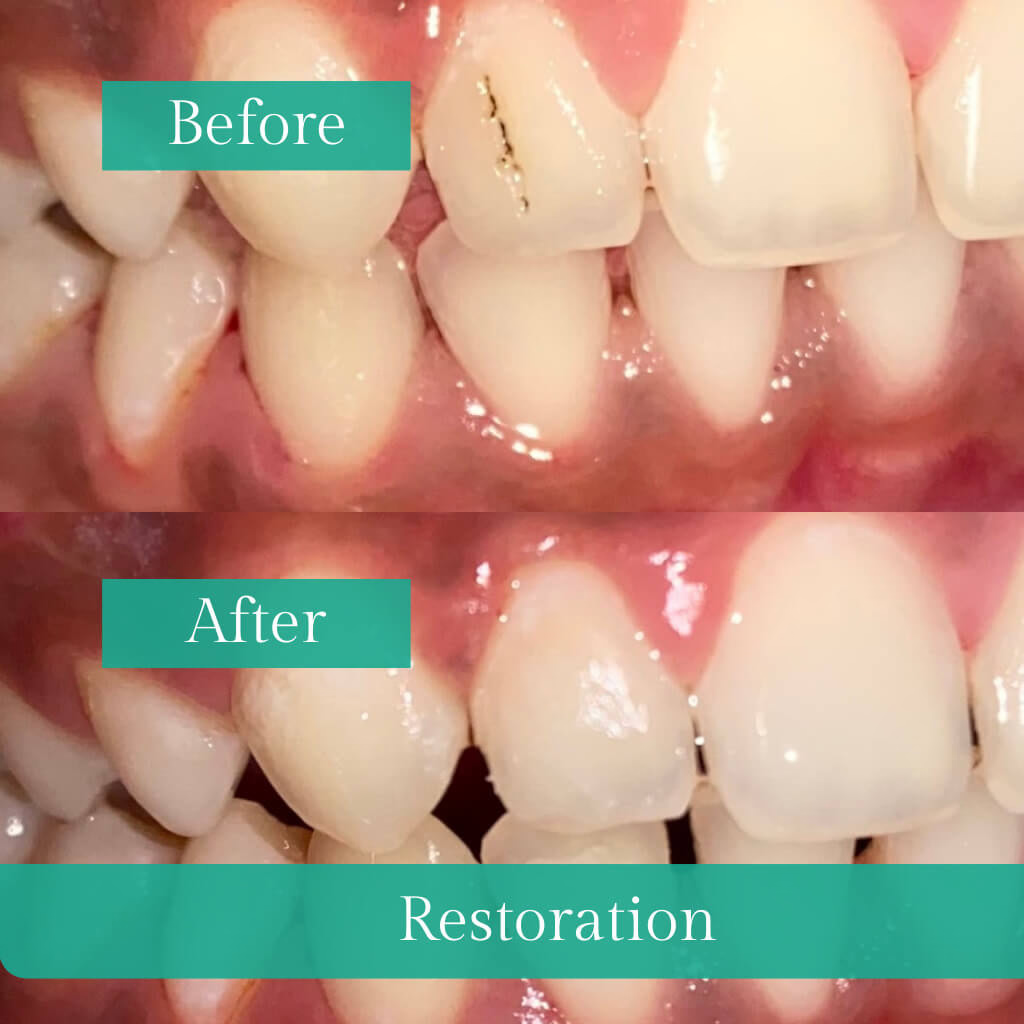Cavity Filling Procedure: Your Guide to A Healthy Mouth
Transform your smile with a top-notch cavity-filling procedure—a healthy mouth is your best accessory!
Throughout this guide, we will provide a detailed overview of each step involved in cavity filling, from initial examination to post-procedure care. By understanding the intricacies of this dental treatment, you'll gain valuable insights into how to preserve your dental health effectively. Let's explore the journey towards achieving and maintaining a healthy mouth together.
Key Takeaways:
- Early Detection Matters: Recognize signs like tooth sensitivity or visible black or brown holes on the surface of teeth or food getting stuck in between teeth.
- Procedure Steps: The cavity filling involves X-rays, numbing, removing the Decay, choosing a filling material (like composite resin or ceramic), and shaping and polishing.
- Aftercare is Vital: Brush and floss regularly to maintain the filling and overall oral health.
- Different Materials: Depending on the cavity's location and size, fillings can be made of materials like composite resin for looks or ceramic for large extensive cavity which requires durability.
- Regular Check-ups Help: See your dentist regularly to monitor oral health and catch issues early.
Understanding the Cavities
The Cavities, also known as dental caries or tooth decay, are spots of damage on the hard surface of teeth that can progress into small openings or holes. They are mainly caused by bacteria in the mouth, frequent intake of sugary foods and drinks, inadequate oral hygiene practices, and genetic factors. If not addressed, cavities can result in discomfort, infection, swelling and possible tooth loss.
Signs You May Need a Cavity Filling
Early detection of cavities is crucial to prevent further dental complications. Look out for the following signs:
- Tooth Sensitivity: Especially to hot, cold, or sweet foods and beverages.
- Visible Holes or Pits: You may notice dark spots, white spots, or holes in your teeth.
- Pain or Discomfort: Persistent toothache or pain when chewing.
Routine dental examinations are pivotal in identifying cavities before symptoms manifest.
Step-by-Step Process of Cavity Filling
1.Initial Assessment and X-rays
The cavity filling procedure typically begins with a thorough assessment of your dental health. The dental professional will visually examine the teeth and may use X-rays to accurately assess the size and location of the Decay. X-rays are essential because they can uncover cavities hidden between teeth or beneath existing fillings that might not be detectable during a visual examination alone. This initial assessment helps the dentist determine the best approach to treating the cavity.
2.Numbing the Area
Before starting the cavity-filling procedure, the dental professional will use a local anesthetic (such as lignocaine or articaine) to numb the area surrounding the affected tooth. This ensures you stay comfortable and pain-free during the entire procedure. The numbing process involves applying a topical numbing gel followed by injecting the anesthetic into the gum tissue near the tooth. You may feel a slight pinch or pressure during the injection, but it should not be painful.
3.Removing Decay
After the area is numb, the dentist will use specialized tools, like a dental drill or laser, to eliminate the decayed portion of the tooth, sometimes for minimally invasive procedure a hand instrument-spoon excavator. The goal is to eliminate all traces of Decay and create a clean, healthy surface for the filling. The dentist will carefully navigate the cavity, removing only the decayed part of the tooth at the same time while preserving as much healthy tooth structure as possible.
4.Choosing and Placing the Filling Material
After removing the Decay, your dentist will choose the suitable filling material based on factors like the cavity's location, the filling's size, your dental history, and your esthetic preferences. Common filling materials include:
- Composite Resin: This material matches the colour of your teeth, is versatile, and integrates seamlessly with your natural teeth, making it ideal for visible areas.
- Ceramic (Porcelain): Known for its durability and natural appearance, ceramic fillings are often used for back tooth it is called as inlay or onlay when the tooth structure is compromised
- Silver Amalgam: A solid and economical option, typically used for filling cavities in molars and premolars where chewing forces are most vital. Due to its mercury content is not used any more in dental practice.
- GIC (Glass Ionomer Filling): It is usually used when tooth is sensitive and patient have wide spread of cavities in mouth. Kids are most suitable candidates for this type of filling material as it releases fluoride.
The dentist will skillfully insert the chosen filling material into the prepared cavity, layer by layer, and shape it to ensure it fits snugly and matches the natural contours of your tooth. Special techniques may be used to bond the filling securely to the tooth structure.
5.Shaping and Polishing
After placing the filling material, the dentist meticulously sculpts it to replicate the natural shape of your tooth. This involves sculpting the filling to ensure proper bite alignment and a smooth surface. Proper shaping is crucial for comfort and functionality when chewing and speaking.
After shaping, the dentist refines the filling to avoid rough edges and achieve a polished finish. This not only enhances the appearance of the filling but also reduces the risk of plaque buildup and staining.
Special Considerations for Older Adults and Pregnant Women in Dental Treatments
Dental treatments, including cavity fillings, are typically safe for older adults and pregnant women when managed with appropriate precautions and considerations tailored to their specific health needs.
For Older Adults:
- Medical History Review: Dentists review the medical history of older patients to understand any underlying health conditions or medications that may impact dental treatment. Conditions such as heart disease, diabetes, and hypertension may require special consideration.
- Oral Health Challenges: Older adults may have unique oral health challenges, such as dry mouth (xerostomia), gum disease (periodontitis), or tooth sensitivity. Dentists may adjust treatment plans accordingly to ensure comfort and effectiveness.
- Gentle Techniques: Dentists may employ gentle techniques and minimally invasive procedures to accommodate older patients, ensuring minimal discomfort and faster recovery times.
- Regular Monitoring: Regular dental check-ups are crucial for older adults to monitor oral health changes and address any emerging issues promptly.
For Pregnant Women:
- Safety of Anesthesia: Dental anesthesia, particularly during the second and third trimesters, can be administered safely when necessary.
Dentists carefully assess each situation and may minimize the use of anesthesia during the first trimester unless essential. They work closely with obstetricians to ensure that dental procedures are conducted with the highest level of safety and consideration for the pregnancy stage. This collaborative approach ensures that expectant mothers can confidently receive necessary dental care and maintain their oral health throughout their pregnancy.
- XRay Care: A Lead apron is worn by pregnant patient before shooting any Xray.
- Choice of Filling Materials: Composite resin fillings are typically preferred over amalgam fillings during pregnancy due to concerns about mercury exposure. Composite fillings are safe and effective for restoring teeth without posing risks to maternal or fetal health.
- Routine Dental Care: Maintaining good oral hygiene is essential during pregnancy to prevent dental issues such as gum disease, which is linked to adverse pregnancy outcomes like preterm birth.
- Timing of Treatment: Non-urgent dental treatments may be postponed until after delivery, especially during the first trimester and third trimester when fetal development is most critical. However, urgent dental issues such as severe pain or infection should be addressed promptly to prevent complications.
- Open Communication: Pregnant women should inform their dentist about their pregnancy status and any changes in health or medications. This allows dentists to tailor treatment plans and provide guidance on oral health care during pregnancy.
In both cases, older adults and pregnant women benefit from personalized dental care that considers their unique health circumstances. Dentists play a pivotal role in safeguarding the safety and success of dental procedures, tailoring treatments based on patients' medical backgrounds, current health conditions, and procedural risks. Ongoing dialogue between patients and their dental professionals is crucial for sustaining oral health and overall wellness across various life stages.
Aftercare and Follow-Up
Following the cavity filling procedure, your dentist will give you specific aftercare instructions, which typically include:
- Avoid hard foods, especially during the first few hours after the cavity-filling procedure.
- Effective oral hygiene depends on gently brushing your teeth twice daily with fluoride toothpaste and ensuring daily flossing. By steadfastly adhering to these practices, you actively prevent plaque buildup, which supports optimal oral health and preserves the vitality of your teeth and gums.
- Monitoring for sensitivity following a dental filling is essential, as some individuals may initially experience sensitivity to hot, cold, or sweet foods. This sensitivity typically improves within a few days. However, if sensitivity persists or worsens, you should contact your dentist promptly. Regular dental check-ups, as scheduled, are crucial to ensuring the filling remains intact and maintaining overall oral health. These appointments enable your dentist to assess the status of the filling and promptly address any issues, supporting sustained oral health and ensuring your ongoing comfort.
FAQ’s
Conclusion:
In conclusion, Understanding the cavity-filling procedure is crucial for maintaining excellent oral health and preventing additional dental complications. By recognizing the signs of cavities early, undergoing timely treatment, and following proper aftercare practices, you can preserve your natural teeth and ensure a healthy smile for years to come. Remember, regular dental check-ups and diligent oral hygiene routines are your allies in combating tooth decay and promoting overall well-being.
For expert dental care and personalized guidance on cavity fillings and all your oral health needs, consider visiting Hope Dental & Esthetic Clinic, Noida. Our skilled team is committed to delivering compassionate care and assisting you in achieving and sustaining optimal oral health. Book your appointment now to take proactive steps towards achieving a brighter, healthier smile.




